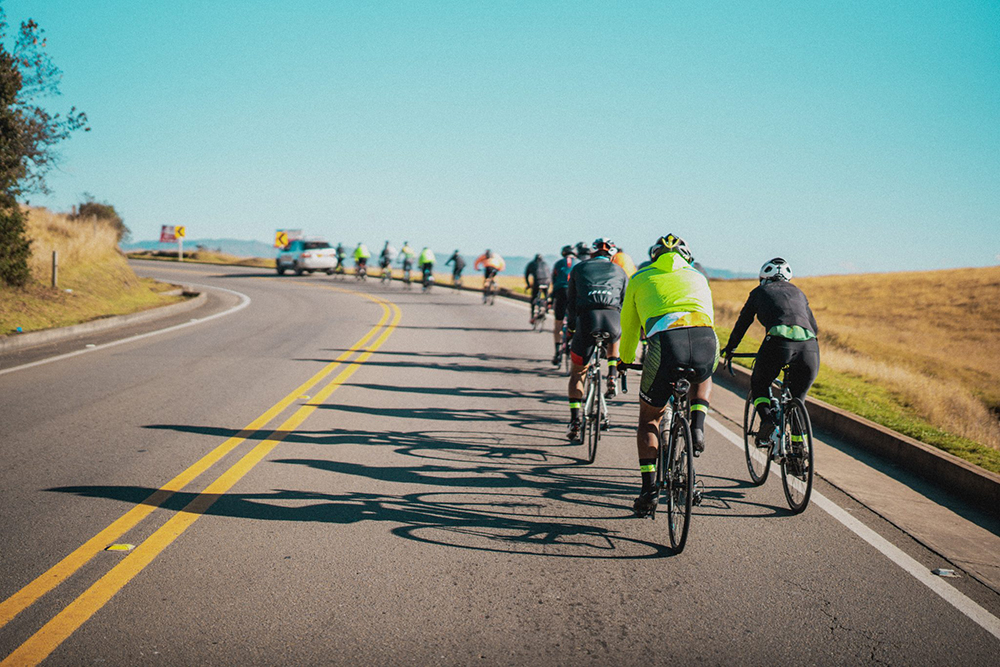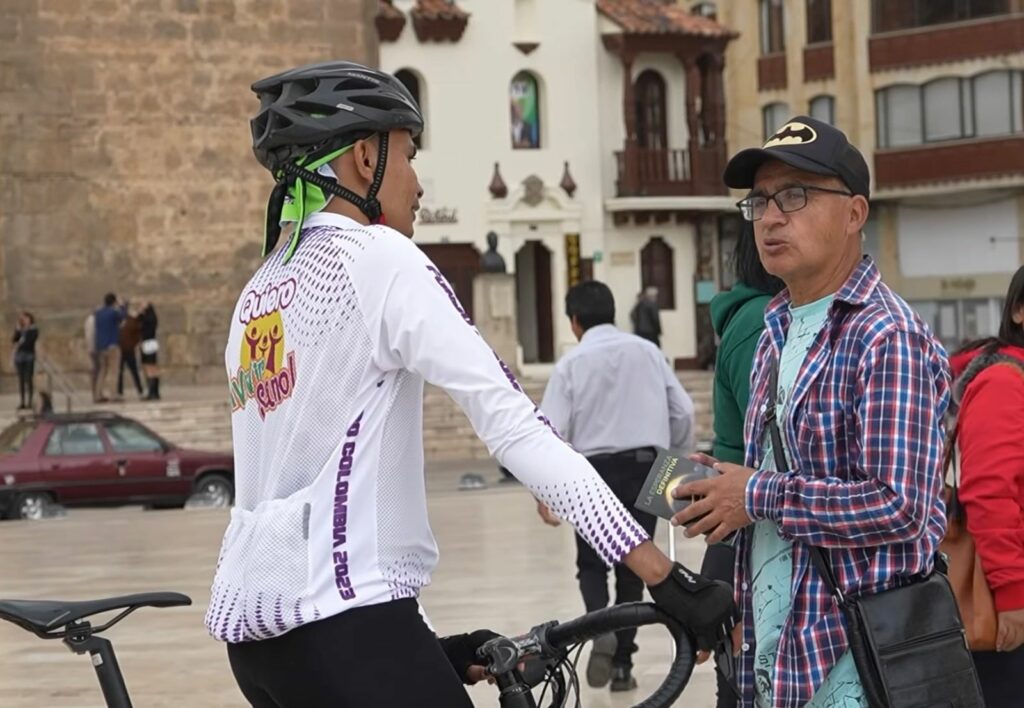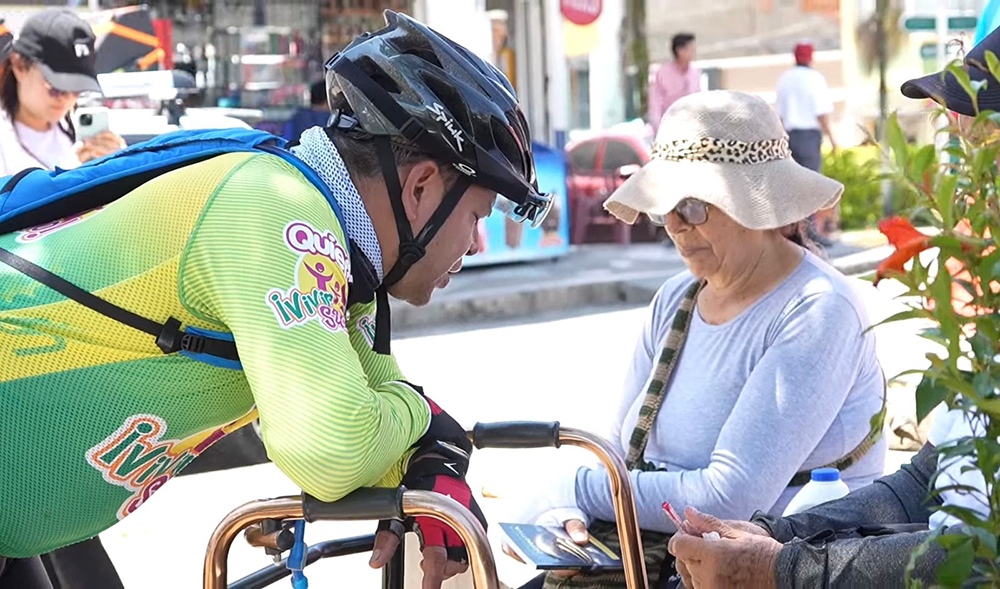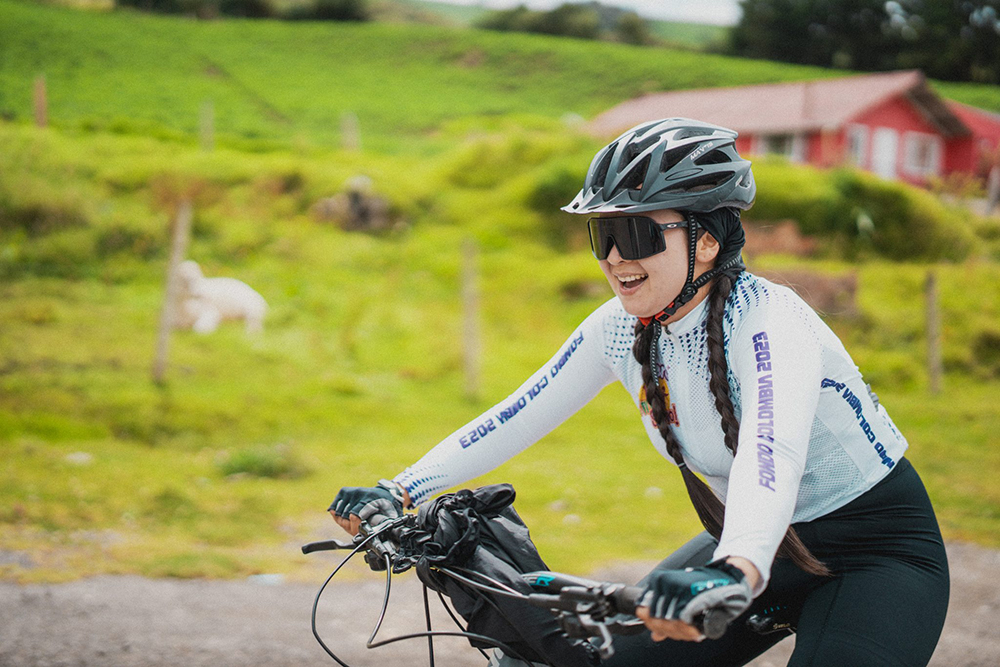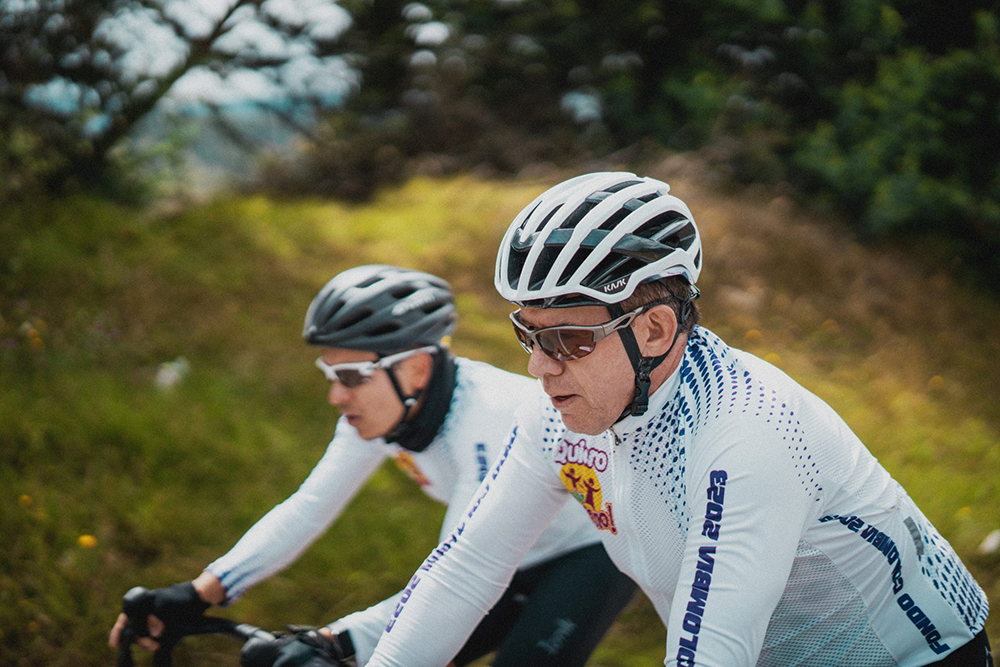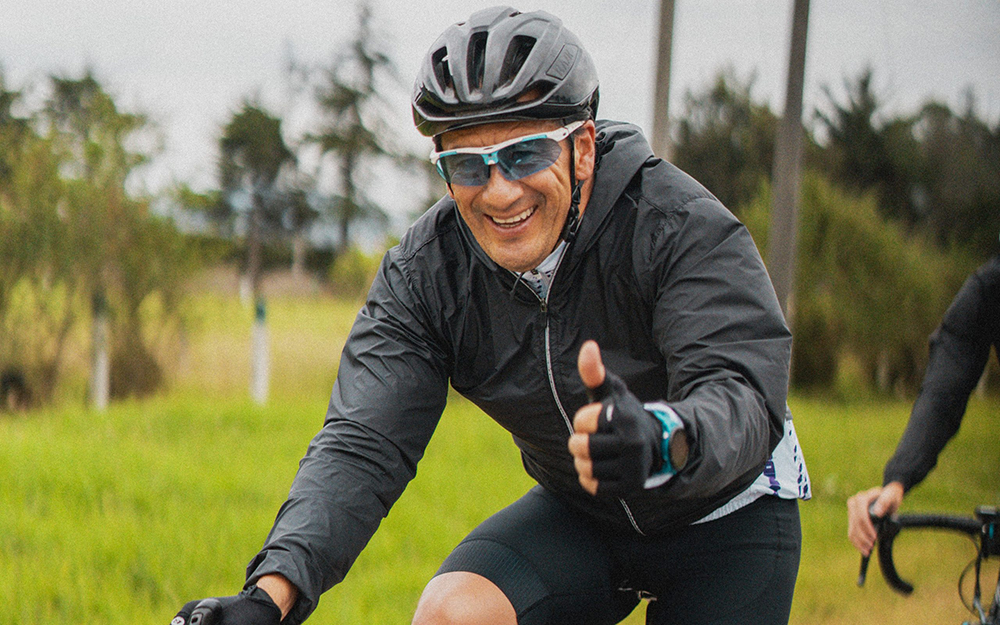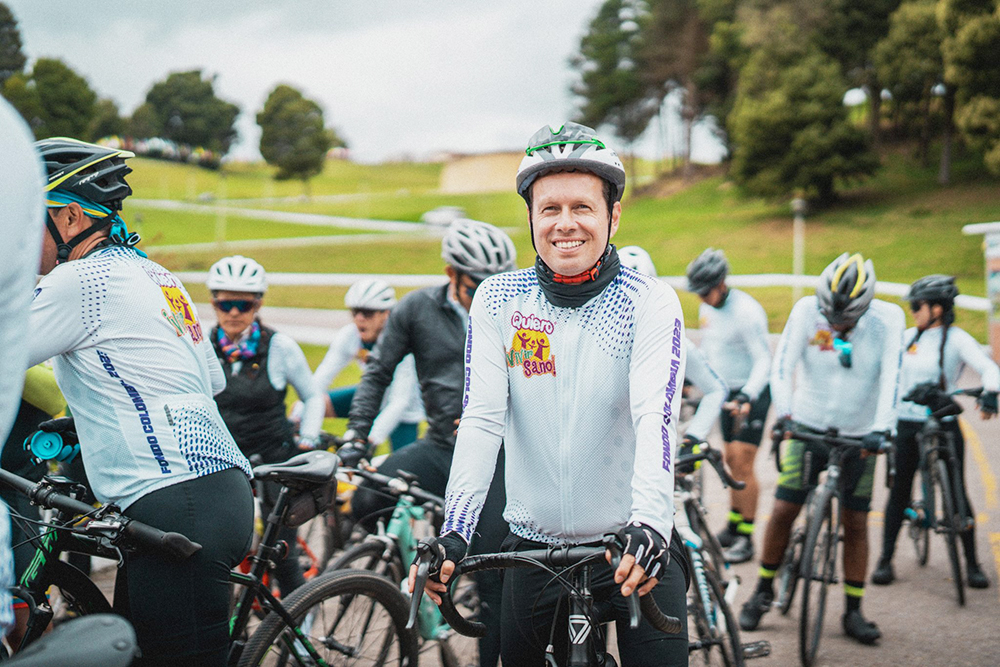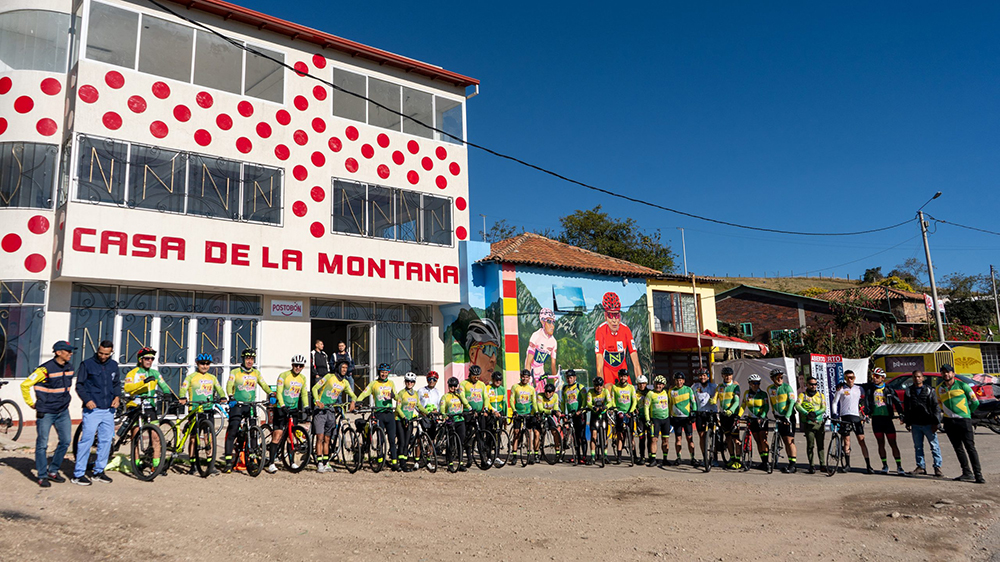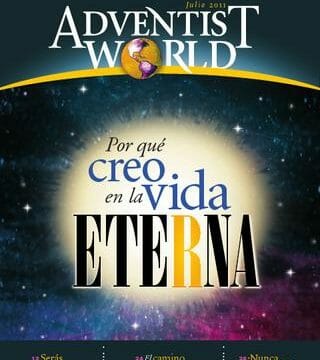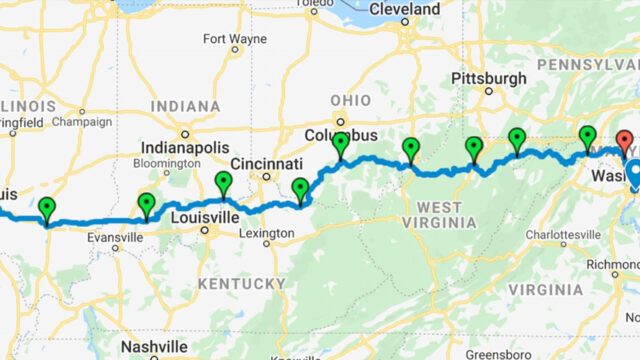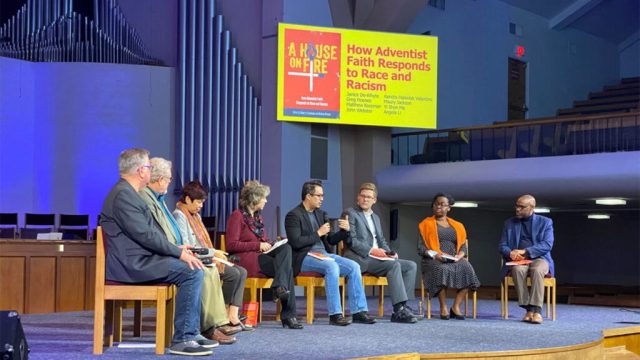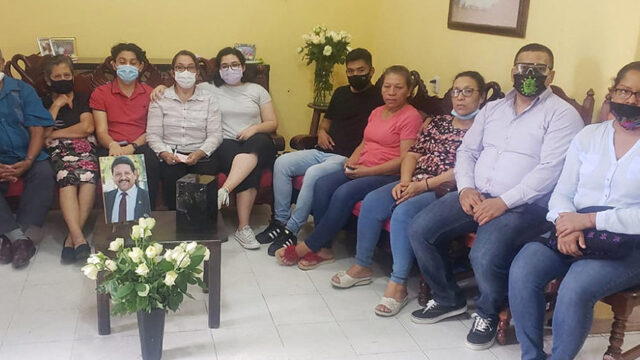Adventist club made a difference during 5-day tour across the country.
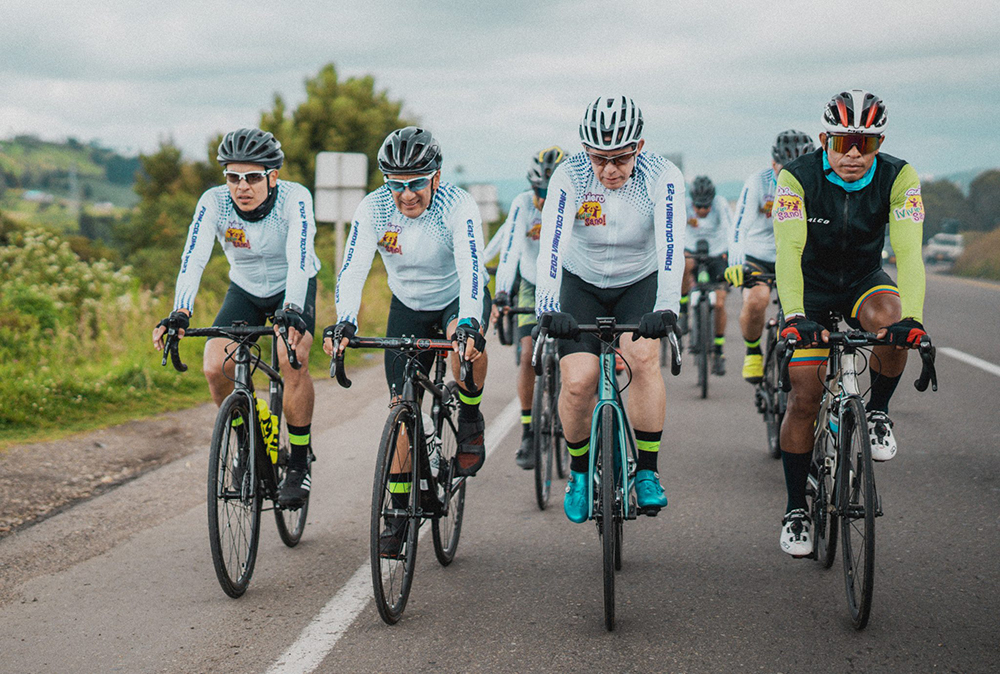
A team of 35 Seventh-day Adventist cyclists embarked on a grueling 420-kilometer (260-mile) tour as part of the “Hope on Wheels” Colombia initiative, from October 11-15.
The team’s passion for cycling and their earnest desire to spread hope was evident from start to finish, as they rode from Tunja, at 2,822 meters (9,260 feet) above sea level, to Bucaramanga, at 960 meters (3,150 feet) above sea level. Along the way, they delivered 780 books, 450 water bottles, and 550 pieces of literature, reaching 1,750 people with the message of the “I Want to Live Healthy” initiative.
Challenges Along the Way
Hope on Wheels Colombia included four challenging stages that tested the riders’ endurance, organizers said. The first stage covered 104 kilometers (65 miles) from Briceño, Cundinamarca, to Tunja, Boyacá, and presented mostly flat terrain and maximum temperatures of 23 degrees Celsius (73 degrees Fahrenheit), at 2,822 meters (9,260 feet) above sea level.
The second stage of 70 kilometers (43 miles) took cyclists from Tunja to Barbosa, in Santander, through steep routes and panoramic views. The first stop was at the famous house of cyclist Nairo Quintana, where Quintana’s mother, Eloisa Rojas, and brother welcomed the 35 Seventh-day Adventist cyclists. “Thank you for your prayer and for being here,” they told the cyclists. “Everyone is welcome.”
In the third stage, the cyclists rode through the Santander state for 115 kilometers (71 miles), from Barbosa to San Gil, through narrow roads, enduring temperatures that reached 30 degrees Celsius (86 degrees Fahrenheit) and elevations of 1,114 meters (3,655 feet) above sea level.
On Saturday, October 14, the cycling club had a morning program at the Renacer Central Adventist Church in San Gil. The cyclists participated in Sabbath School, praise, prayer, testimonies, and the children’s corner. They even preached, thus sharing their faith and message of healthy living. “We are grateful for the witnessing work of these cycling clubs in Colombia,” members commented.
The fourth and final stage covered 110 kilometers (68 miles) from San Gil to Bucaramanga. The cyclists rode through steep ascents under sweltering heat, passing by the Chicamocha volcano. Despite the challenging journey, all the riders successfully completed the course.
Community Impact
One of the highlights of the event was the positive impact it had on communities along the route, organizers said. At each stop, from Tunja to Bucaramanga, church and community members greeted the team.
Henry Cárdenas, a famous Colombian cyclist in the 1980s and 1990s, joined the 35 cyclists for the first stage. “It was a great experience,” Cárdenas said. “I would like to repeat this experience next year because I have enjoyed riding with them. They carry an important message of healthy living, and I hope they can even get more members enrolled in their club.”
Leonel Preciado, health director in the Southern Colombia Union, and Mauricio Buitrago, health director in the Northern Colombia Union, organized the event, which called for careful logistical considerations. “We achieved the purpose we had set for ourselves, and we are happy for what has been achieved,” Preciado said. “Great things have happened, and this is a great blessing.” Preciado noted that more and more people are getting to know about the program thanks to the thorough work behind the scenes.
Buitrago reminded church members that the goal was to impact communities along the way. “At the same time, the cyclists themselves benefited with personal transformation, hope, and commitment to the church,” he said. Now the goal is to keep strengthening the clubs at the regional level, to attract more members, and to prepare for future impact initiatives. “We will continue to support this ministry and the preaching of the gospel,” Buitrago said.
Stories that Inspire Hope and Faith
The event also featured moving testimonies from participants such as Lorena Acero, who was a teacher at the Vistahermosa Adventist School and is now part of the QVS Cycling Club. “When I became an Adventist, it was very hard for my family to accept that I did not belong to their religious tradition anymore,” Acero said. “But then through the cycling club, my family got to know the environment and to see how we enjoy ourselves, how we enjoy life, and how we follow Christ.”
Acero also shared that she felt inspired to start a cycling club with the students at her school, something that allowed her to share the gospel with her students and their parents. “I invite all those people who love cycling to keep a healthy lifestyle by becoming a club member,” she said.
Fifty-eight-year-old Carlos Torres, on the other hand, stressed the importance of using cycling as a tool to share a message of salvation. “I think that through sport we can also do mission and contribute to the growth of the church,” Torres said. “We have to work together, so we can reach more people.”
The Adventist Development and Relief Agency (ADRA) in Colombia provided medical staff during the journey. Their presence ensured riders stayed well and safe and reflected the Adventist community’s commitment to the participants, organizers said. “We thank God because He kept [the] cyclists safe,” they said.
Real-Time Coverage
Adventist communicators from both unions provided real-time coverage of the event. Through the official social media accounts of the Adventist Church in the regions, followers were able to experience each stage of the journey up close. Daily reports on Facebook and Instagram showed the audience the challenges the cyclists faced, the beauty of Colombian landscapes, and the exciting interactions with local communities.
“This real-time coverage not only kept followers informed but also inspired people along the way to join the route and experience the camaraderie and mission of bringing hope through cycling,” communicators said.
Organizers said they were more than satisfied with the event results. “This initiative displayed the power of combining faith and sport to make a positive difference in society,” they said.
The original version of this story was posted on the Inter-American Division news site.


